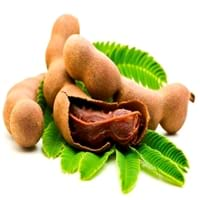Health Benefits
Asthma treatment, Heart care, Improves stomach health, Regulation of heart rate, Treatment of skin Diseases
Boosts immune system, Boosts respiratory health, Cancer prevention, Digestive aid, Piles treatment
General Benefits
Boosts immune system, Controls blood pressure, Eye care, Helps in weight loss
Beneficial in improving nerve function, Protects against parasites and worms, Relieves pain
Skin Benefits
Brightens and lightens complexion, Heals sunburn, Reduces wrinkles, Skin rejuvenation, Treatment of acne, Treatment of dark spots, Treatment of skin diseases
Anti-aging benefits, Brightens and lightens complexion, Exfoliates skin, Hydrates skin, Treatment of dark spots
Hair Benefits
Prevents hair loss, Promotes longer and healthier hair, Treatment of dandruff
Prevents hair loss
Allergy Symptoms
Abdominal pains, Anaphylaxis, Breathing difficulty, Itching in tongue and other parts of mouth, Itching sensation in throat, Swelling of mouth, tongue or lips, Vomiting
Abdominal pains, Breathing difficulty, Dizziness, Eczema, Fainting, Hives, Itching, Nasal congestion, Swelling of face, Tingling sensation in mouth, Vomiting
Side Effects
Allergic reaction, Diarrhoea, Skin rash, Possibly unsafe during pregnancy
Decrease in blood sugar levels, Induces acid reflux, Allergic reaction, Tooth decay, May form gallstones
Best Time to Eat
Any time except an hour after meal
Along with meal, As a snack in the late afternoon, Don't consume at night and before bed, Strictly avoid empty stomach
Vitamin B5 (Pantothenic Acid)
Vitamin C (Ascorbic Acid)
Vitamin K (Phyllochinone)
Phytosterol
Not Available
Calories in Fresh Fruit with Peel
Not Available
Calories in Fresh Fruit without Peel
Not Available
Calories in Frozen Form
Not Available
Calories in Canned Form
Not Available
Season
Spring, Summer, Winter
Spring, Summer
Varieties
Qing Yuan #27, Qing Yuan #29, Qing Yuan #6 and Huang Yan
PKM 1, Urigam, Hasanur, Tumkur prathisthan, DTS 1 and Yogeshwari
Color
Brown, Yellow
Brown, Reddish-brown
Inside Color
Yellow
Brown
Shape
Oval
Curving Cylinder
Soil Type
Well-drained
Loam, Sandy, Sandy loam, Well-drained
Climatic Conditions
Cold, Sunny
Humid to dry, Rainfall, Warm to hot climate
Facts about
- The name Kiwi is due to its resemblance with 'Kiwi' bird.
- This variety of Kiwi was developed by New Zealand, it is not fuzzy on the outside and it has a taste reminiscent of the mango fruit.
- Tamarind is used to prevent body odor.
- African children use the tamarind seeds in games.
- No cases of tamarind toxicity or allergy reported till date.
Other Countries
Chile, France, Greece, Iran, Japan, New Zealand, Portugal, Turkey, United States of America
Africa, Australia, Brazil, China, Mexico, Nigeria, Sudan, Taiwan
Top Importer
United States of America
United States of America
Top Exporter
New Zealand
Thailand
Botanical Name
Actinidia chinensis
Tamarindus indica
Synonym
Not Available
Tamarindo, tamarindus
Subkingdom
Tracheobionta
Tracheobionta
Division
Magnoliophyta
Magnoliophyta
Class
Magnoliopsida
Liliopsida
Subclass
Dillenhidae
Rosidae
Family
Actinidiaceae
Fabaceae
Genus
Actinidia
Tamarindus
Species
A. chinensis
Tamarindus indica
Generic Group
Kiwi
Tamarind Sub
Difference Between Gold Kiwi and Tamarind
We might think that Gold Kiwi and Tamarind are similar with respect to nutritional value and health benefits. But the nutrient content of both fruits is different. Gold Kiwi and Tamarind Facts such as their taste, shape, color, and size are also distinct. The difference between Gold Kiwi and Tamarind is explained here.
The amount of calories in 100 gm of fresh Gold Kiwi and Tamarind with peel is 60.00 kcal and Not Available and the amount of calories without peel is Not Available and 239.00 kcal respectively. Thus, Gold Kiwi and Tamarind belong to Low Calorie Fruits and High Calorie Fruits category.These fruits might or might not differ with respect to their scientific classification. The order of Gold Kiwi and Tamarind is Ericales and Fabales respectively. Gold Kiwi belongs to Actinidiaceae family and Tamarind belongs to Fabaceae family. Gold Kiwi belongs to Actinidia genus of A. chinensis species and Tamarind belongs to Tamarindus genus of Tamarindus indica species. Beings plants, both fruits belong to Plantae Kingdom.









